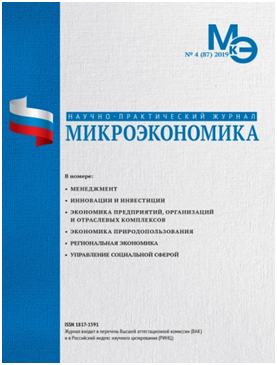Problems of lean manufacturing implementation at the enterprise and methods to solve them
DOI: 10.33917/mic-2.115.2024.51-61
The problem of modernization of production systems in Russia is currently manifested in an acutely pronounced form. Their basis in most companies is the concept of mass production, which does not fully meet modern requirements, and therefore does not bring the expected effect. The introduction of new systems requires extraordinary efforts on the part of both management and staff. One of the most effective methods implemented in the practice of business entities today is lean manufacturing. Let’s consider its tools and methods as a means of increasing the efficiency of the enterprise.
References:
1. GOST R 56020-2020. The national standard of the Russian Federation: Lean manufacturing. Basic provisions and dictionary (approved and put into effect by Rosstandart Order No. 513-st dated 08/19/2020). URL: https://ivo.garant.ru
2. Order of the Ministry of Industry and Trade of the Russian Federation No. 1907 dated 06/20/2017 «On Approval of Recommendations on the Application of Lean Manufacturing Principles in various industries». URL: https://ivo.garant.ru
3. Passport of the National project «Labor Productivity» [Electronic resource]. Website of the Ministry of Economic Development of the Russian Federation. Access mode: https://www.economy.gov.ru /material/directions/nacionalnyy_proekt_proizvoditelnost_truda/
4. Battalov A.M. Stages of the formation of the concept of «Lean production». Innovative science. 2022;(5-1):27-32. (In Russ.).
5. Lean manufacturing: implementation without resistance [Electronic resource]. Financial Expert portal. Access mode: http://www.Finexpert.Ru/view/
6. Lean manufacturing: how to get rid of losses and achieve prosperity for your company. James Wumek, Daniel Jones; translated from English – 5th ed. Moscow: Alpina Business Books, 2022. 472 p.
7. Vikhansky O.S. How popular is lean manufacturing in Russia. Expert-Ural. 2019;7 (270). (In Russ.).
8. Hobbs D.P. Introduction of lean manufacturing. A practical guide to business optimization. Minsk: Grevtsov Pavlisher, 2007. 352 p.
9. Vader M. Lean manufacturing tools: A mini-guide to the implementation of lean manufacturing techniques. Michael Vader; translated from English. M.: Alpina Business Books, 2015. 125 p.
10. Golyakov S.M. Modern production systems of enterprises. Collection of scientific articles problems of interaction of economic entities of the real sector of the Russian economy: financial, economic, socio-political, legal and humanitarian aspects. St. Petersburg: Institute of Business and Law, 2014. 125 p.
11. Smirnykh R.V. Corporate project management system as an instrument of the concept of «lean production» in project management. Young scientist. 2020;52(342):356-360. URL: https://moluch.ru/archive/342/76926/
12. Tikhonina A.S. Problems in the implementation of lean production tools. XIV International School – Conference of Young Scientists, Tomsk: STT Publishing House, 2018. pp. 274-276. URL: https://core.ac.uk/download/pdf/287420142.pdf











